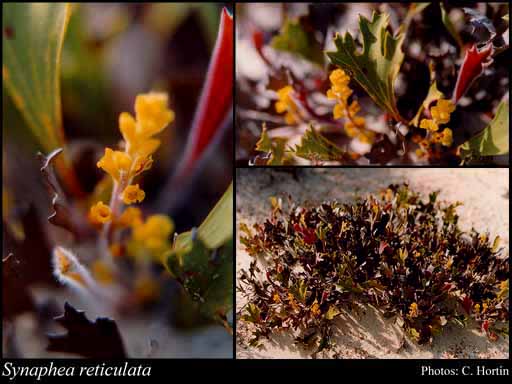- Reference
- Rep.Bot.Exch.Club Brit.Isles 4:650 (1917)
- Conservation Code
- Not threatened
- Naturalised Status
- Native to Western Australia
- Name Status
- Current
Spreading to prostrate shrub, 0.1-0.45 m high, to 0.8 m wide. Fl. yellow, Jul to Oct. White sand, sandy soils over granite or limestone, sometimes with gravel.

Scientific Description
Shrubs; branchlets hairy. Leaves alternate, 60-170 mm long, hairy; petiole hairy; lamina flat, clearly widest above the middle, once divided or twice or more divided, tripartitely divided or divided only at the apex, shallowly divided or deeply divided, indumentum spreading; distance from base of leaf to lowest lobe 85-125 mm; terminal leaf lobe 5-20 mm long, 6-8 mm wide; lowest lobes 10-40 mm long. Inflorescences yellow; scape 40-100 mm long; floral bracts 2.5-3 mm long. Perianth 5-6 mm long, hairy; adaxial tepal 5-6 mm long; abaxial tepal 4-4.5 mm long; ovary hairy, style glabrous; style including stigmatic disc 3.5-4 mm long, horned; stigma 1.5-2 mm long, 1 mm wide. Follicles 5.5-6 mm long. Flowers in July, August, September or October. Occurs in the South-west (SW) Botanical Province(s), in the Avon Wheatbelt (AW), Jarrah Forest (JF), Mallee (MAL), Warren (WAR) or Esperance Plains (ESP) IBRA subregion(s).
Distribution
- IBRA Regions
- Avon Wheatbelt, Esperance Plains, Jarrah Forest, Mallee, Warren.
- IBRA Subregions
- Fitzgerald, Katanning, Recherche, Southern Jarrah Forest, Warren, Western Mallee.
- IMCRA Regions
- WA South Coast.
- Local Government Areas (LGAs)
- Albany, Broomehill-Tambellup, Denmark, Esperance, Gnowangerup, Jerramungup, Kent, Kojonup, Plantagenet, Ravensthorpe.